Corsair Hydro Series: H60, H80 and H100 Reviewed
by Jared Bell on November 7, 2011 12:00 AM EST- Posted in
- Cases/Cooling/PSUs
- Corsair
- Water Cooling
Cooler Installation
Mounting the H60 and H80 radiators is similar except the H80 provides a minor challenge due to its thicker size and having a second fan to install. After all is said and done, it doesn’t pose any real problems. Just make sure to take your time and don't over tighten the screws or you may end up bending the fins on the radiator. Most cases should support either the H60 or the H80 without too much trouble, assuming the case has a mounting point for a 120mm fan. I didn't have any filament problems, and thanks to the low profile of the CPU block, I don't see any issues with the second fan hanging slightly over the CPU block if needed.
The H100's 2x120mm radiator design and 275mm overall length may pose problems depending on your choice of case. You're going to need ~52mm of clearance to install the H100 in its default configuration and a whopping ~77mm if you opt for a push/pull setup. This is of course assuming you have a case that supports 2x120mm fans with the correct 15mm spacing for the radiator/fans.
I even had trouble installing it in Corsair's own Graphite 600T case. Everything fit properly, but I had to install the radiator inside the case and then install the 2x120mm fans inside the lid where the removable panel is. This may not seem like a problem because the 600T was essentially designed this way; however, the top cover is so restrictive it caused temperatures and noise levels to rise. For testing purposes, I had to leave the top cover off in order not to skew the results. Corsair's new Carbide Series 400R/500R looks to be H100-ready, allowing you to install the radiator on top with the fans inside the case. I can't speak from experience with any other cases for the H100, but if your case meets the clearance and spacing requirements, you shouldn't have any issues.
The installation procedure for the water block is the same for each unit we tested. I think it's a welcomed design improvement over the H50 and H70. Since the water block comes preinstalled with the Intel mounting brackets, AMD users will have to remove them and install the included mounting brackets for AMD CPUs. Also, AMD users do not have to worry about installing a backplate because these kits make use of the backplate already installed on your motherboard. The backplate for Intel CPUs has adjustable mounting holes that slide to easily fit any of the supported CPU sockets.
After securing the backplate with the double sided screw mounting posts, securing the water block is as easy as tightening four thumb screws. Previously with the H70, I had issues lining up the water block properly which led to multiple mounting attempts before good contact was made. With the H60, H80, or H100 blocks, I was able to make good contact on the first try. This was later verified with multiple mounts as described in the testing procedures. Just make sure to take your time and tighten the thumb screws in order as recommended in the manual.


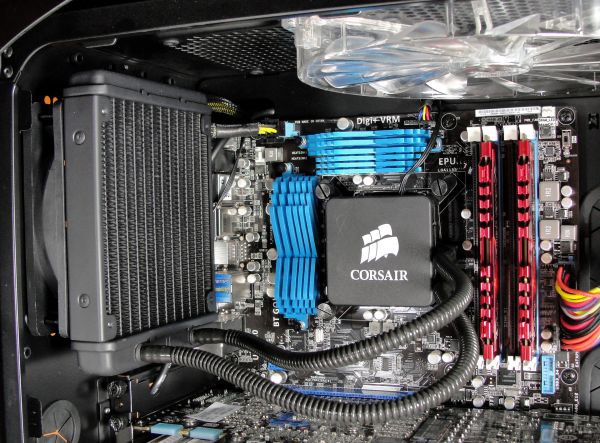
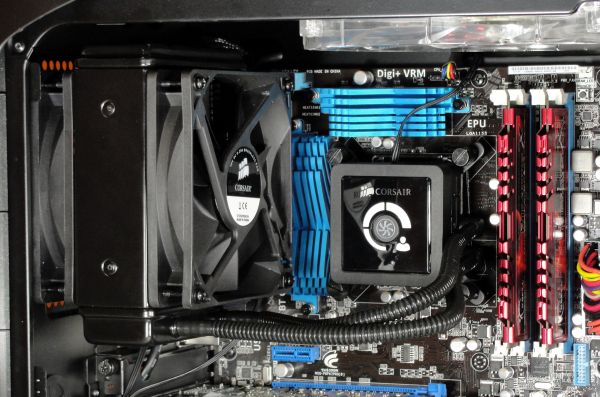
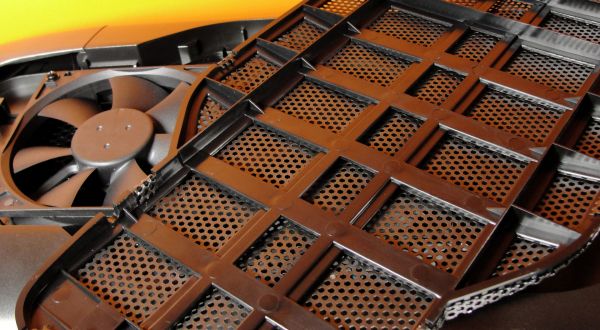
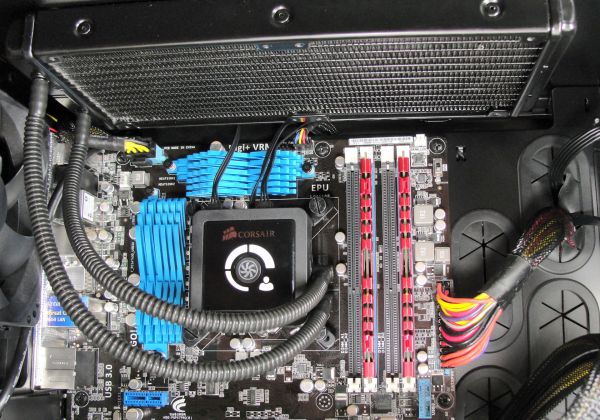

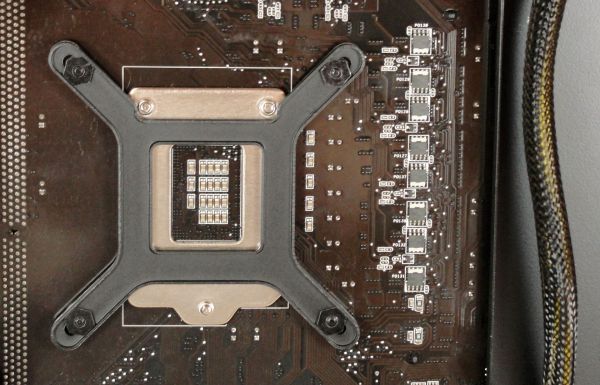








91 Comments
View All Comments
ypsylon - Monday, November 7, 2011 - link
What advantages bring Closed Liquid Cooling solution. Yes big air coolers like Noctua DH-14 or Thermalright/Cogage Silver Arrow (using one of those) easily outperform CLC. But nobody is thinking about how much problems such big radiators bring to your life. Not everybody own case with horizontal motherboard (I do). In standard vertical mounting bolting 2kg to motherboard is a risky business. It can easily bent, brake and destroy brand new and spangling board you just bought. Need some work to reduce stress on the motherboard. From my own experience, I had that problem when I went from vertical to horizontal. There was certainly microscopic bent on CPU socket because short time after switching when board warmed up everything crashed to hell. Screwing everything even tighter helped for a week, but then whole circus started again. After replacing the board problem was gone, but that is the possible problem with humongous radiators. On the other hand CLC are small, weight very much nothing, performance is very good, often on par with extreme air coolers. Of course standard open LC is better option but it cost much more. If you don't do extreme OC and all what you need is excellent cooling for affordable price with minimum clutter around CPU socket then CLC is simply UNBEATABLE! Simples.What I don't like about these Corsairs is that stupid LED display on top of them and that you need to replace fans for something really useful (well all CLC have this problem).
As for why big air coolers still outperform CLC answer is fairly simple: Radiator thickness. 27mm is very thin for an radiator in liquid cooling setup. If they put 50+mm one day then air coolers will be dead. And I mean D.E.A.D.
Tetracycloide - Monday, November 7, 2011 - link
If you don't do extreme OC and all you need is excellent cooling for an affordable price expensive CLCs or expensive big air coolers are easily bested by fairly simple parts. If there's no extreme OCs any of the price points offered by corsair for CLCs are more than you should spend really and price/performance wise the CLCs are actually pretty poor performers relative to standard air coolers. The only thing CLCs really offer are space savings, they trade space around the CPU for space around an exhaust fan which is some chassis is a very good thing.Beenthere - Monday, November 7, 2011 - link
Exactly. Those were my points. The CLC's are a poor value, inefficient and over-rated. One leak can cost you hundreds of dollars is damaged PC hardware.Mediarocker - Sunday, December 18, 2011 - link
Inefficient? Hardly. They perform as well as most air coolers, with the exception of the giant Noctunas and ETC. but when it comes down to it, and you need space savings these are perfect for the job.So no they aren't of a Poor Value, and aren't inefficient and over-rated. They just don't belong in YOUR market segment.
Just because you don't have any use for it doesn't mean that they don't have a place to belong.
Nevertheless these CLC's won't leak as easily due to there being less user error. The CLC's are sealed shut. So leaking is highly improbable without there being some abuse involved, E.G. taking a screwdriver to the rad accidentally.
Take your fears elsewhere. It's been established that you are afraid of liquid cooling and prefer air cooling. That is entirely alright, but don't dismiss the merits of CLC cooling just because it has no use for you.
jed22281 - Monday, November 7, 2011 - link
All-in-one's from Swiftech (latest rev H20-220 etc) & similar specialist vendors are far better performers than the H100.And they're more flexible when it comes to adding your own tweaks/improvements etc.
jed22281 - Monday, November 7, 2011 - link
Pop over to xtremesystems where everyone talks about nothing but water-cooling.And they'll recommended it any day over the sealed loops from Corsair.
Fastidious - Monday, November 7, 2011 - link
Why not include some good cheap air heat sinks as well for comparison as well? I really don't see how this is recommended by Anandtech, very expensive with no major advantages along with added complexity and danger of leaks. It also seems impossible to refill these if they are losing liquid? They do have nice 5 year warranties but I suspect most air heat sinks will last much longer.Iketh - Monday, November 7, 2011 - link
heat pipes would need refilling if they leaked too... your point is mootkyuu - Monday, November 7, 2011 - link
Part of the whole point of closed-loop (these) vs. open-loop water-cooling is that they are much less complex (from the article, it seems that they're actually easier to mount than many traditional air HSFs), and, since they're sealed, there should be no danger of leaks (unless the unit is defective, in which case I'd assume the warranty should cover replacement of any damaged components). And of course it's impossible to refill them... again, they're sealed. You shouldn't have to worry about loss of liquid for the same reason.Personally, I love the idea of the CLCs (water-cooling performance without the expense, trouble, and risk of an open loop water-cooling setup), but unfortunately it's just not there yet. While it does provide a good alternative to mounting bulky, heavy air-coolers, you still have to pay a premium to get merely competitive performance with cheaper airs.
Hopefully, soon they'll be able to get these to outperform air-coolers as a water-cooler should.
mrjoltcola - Monday, November 7, 2011 - link
Maybe I missed it, but I see no mention of fan direction / configuration. For the H60 in particular it is important to mount the fan to push into the case/radiator.The H100 + 600T is really not the best test for that cooler. I reported this to Corsair tech support after I bought the combo, and they wouldn't even admit there was a problem. The grille between the top slot and the radiator causes major turbulence if you mount the fans to push into the case the fans vibrate like crazy. I had to do the same thing Jared did, leave the top grille off. Unacceptable for the money spent, considering Corsair claims compatibility. They were no help, though.
I opted to buy a 650D to move my rig into, but Corsair messed up with the 600T. Most of their other cases are perfect for the H100, though.
I'd like to see AT test the H100 without that inefficient 600T grille, in a case that actually sets up for it like the 650D.